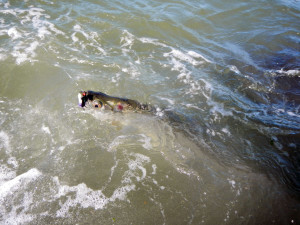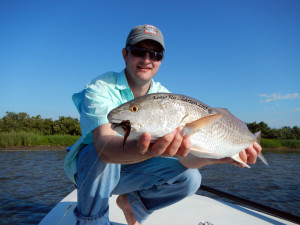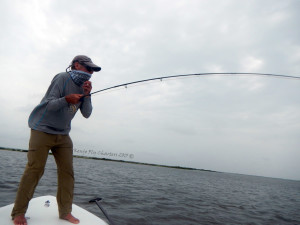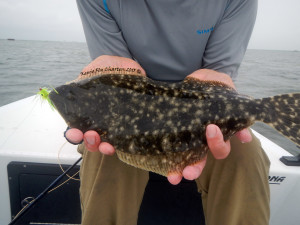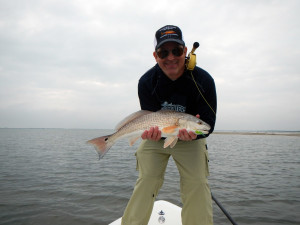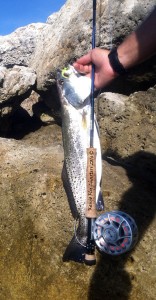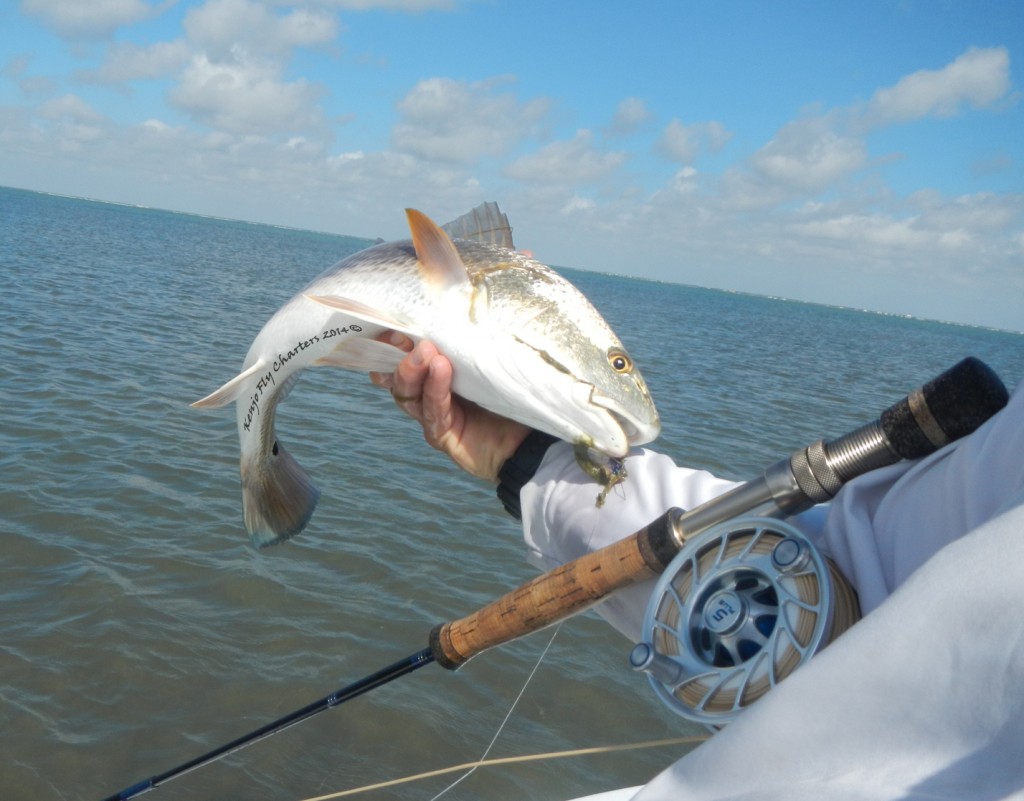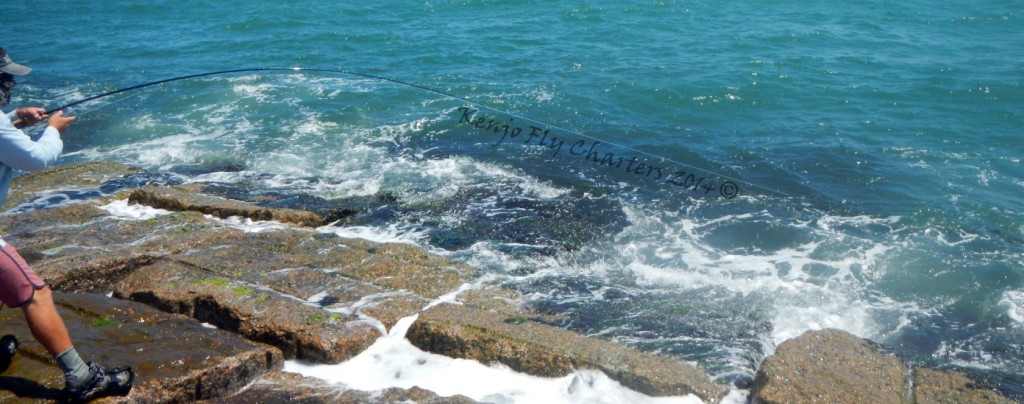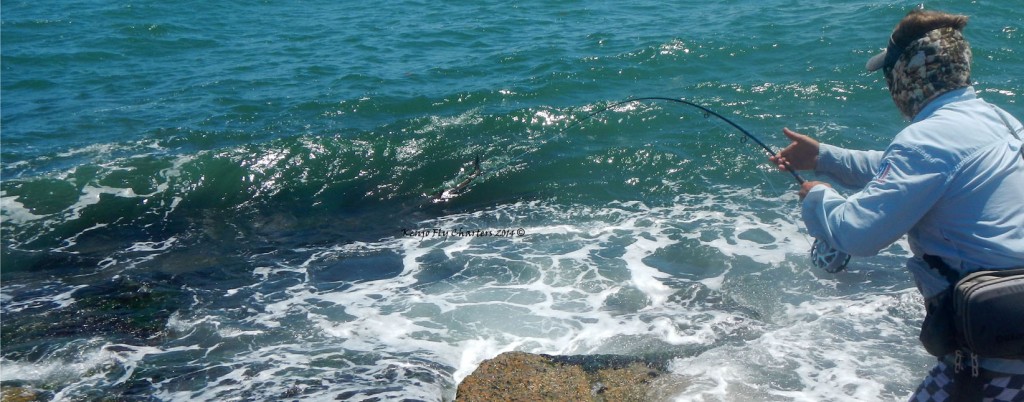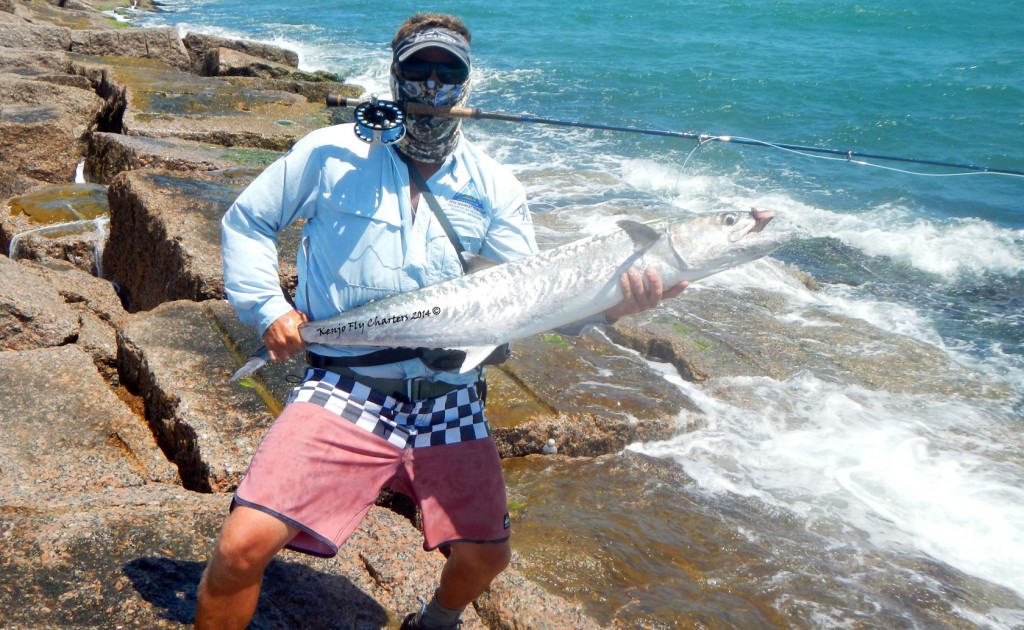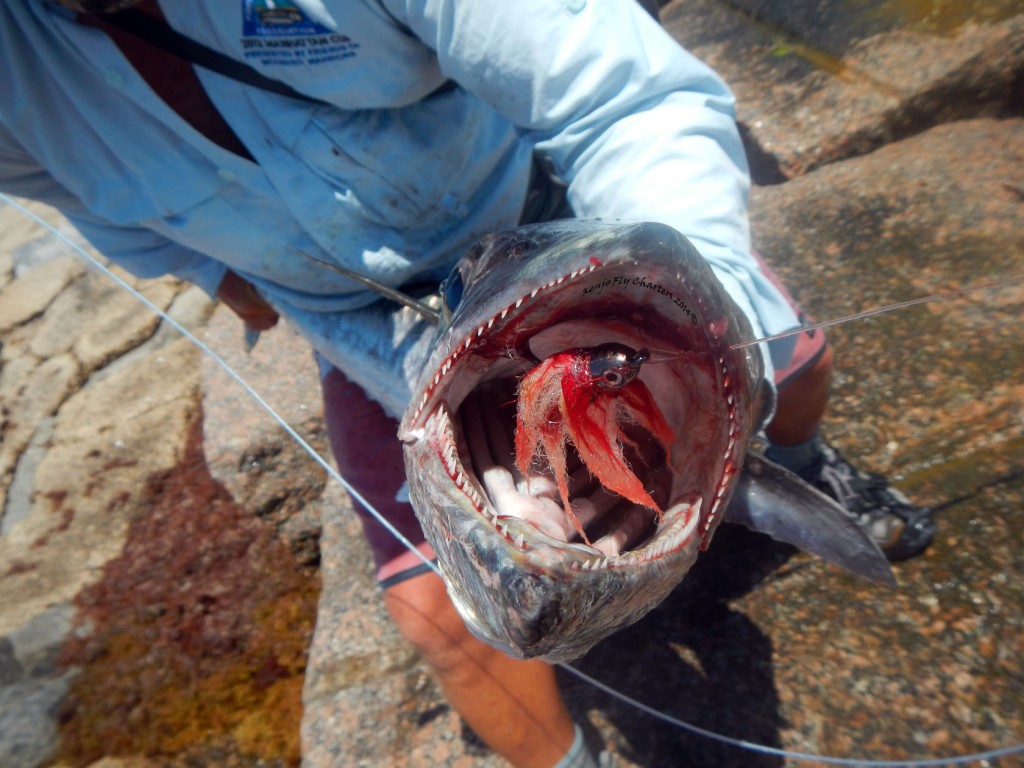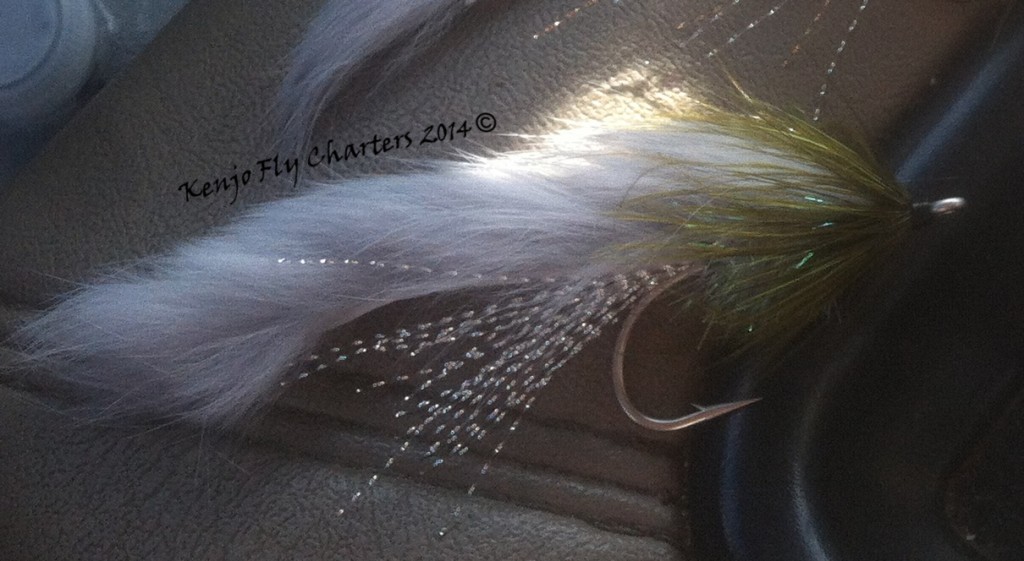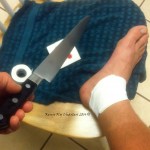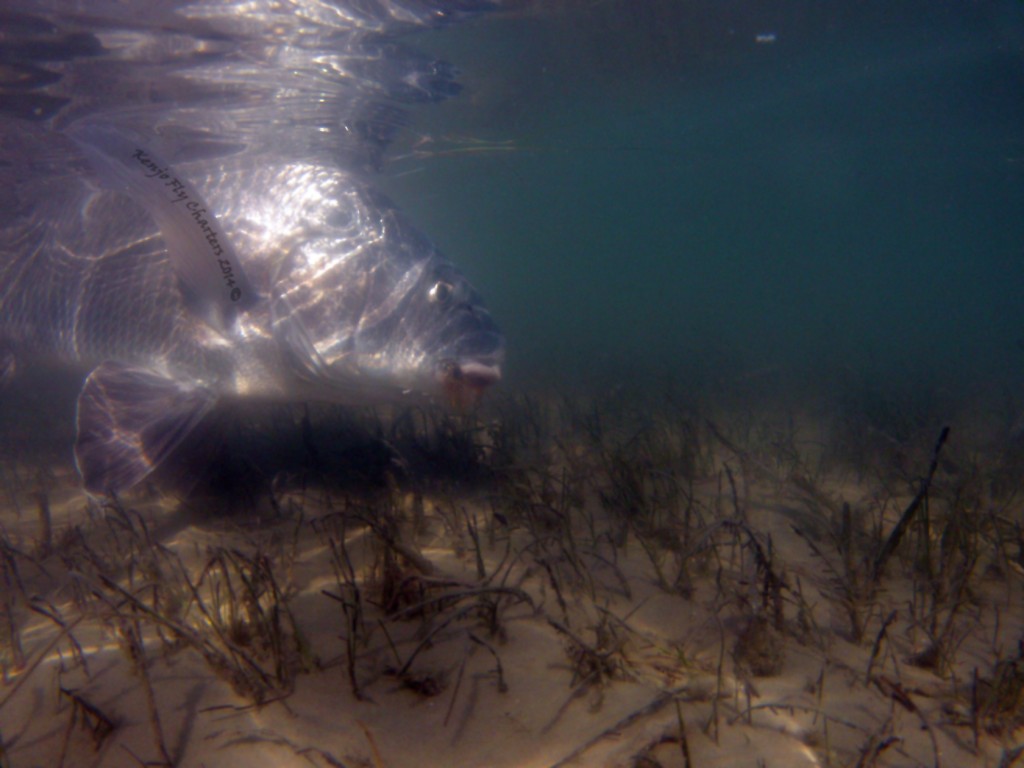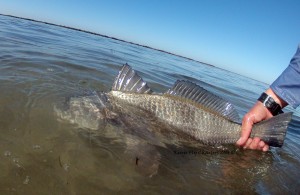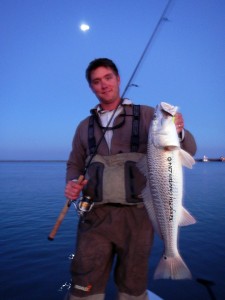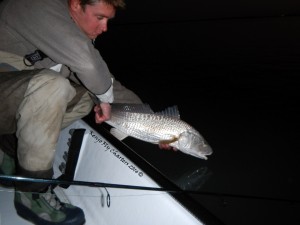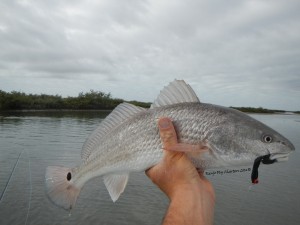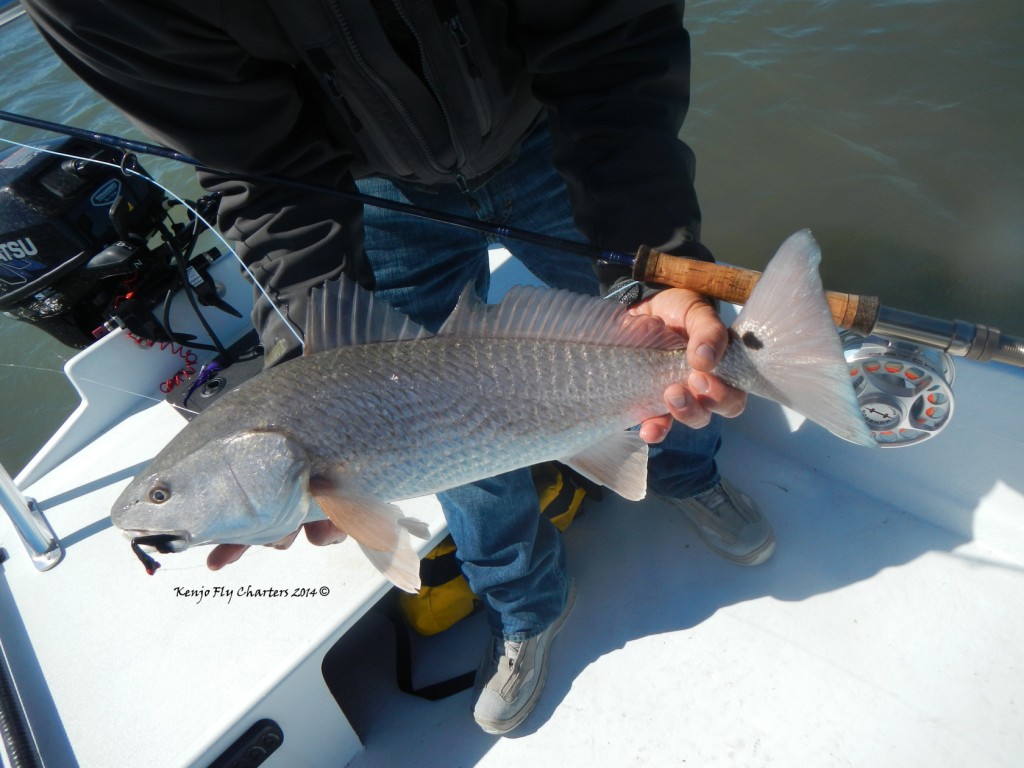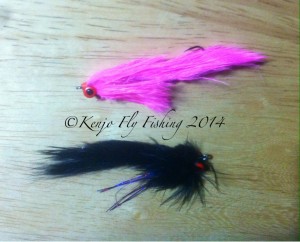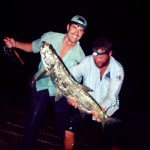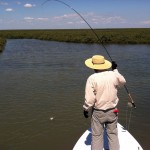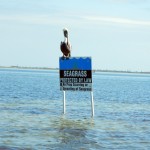Got a little time on the rocks this afternoon and managed to land 2 tarpon back to back. It was quite the luck of the draw and it felt great to get my hands on these silver kings even if they were only 3-ft in size. A lot of variables have to come together and the forthcoming days over the course of this next week should really produce some fun action on the fly! Paying attention to each individual variable in the environment leads to educated decisions. One must ask themselves questions like what type of bait is present, which bait is most prolific at the moment and other things like where is the strike zone and how long can I keep my fly in it before I loose it to the rocks, or a better question is can I even get my fly into what “i think” is the strike zone?
While your standard daytime fly colors are great, such as red/white, chartreuse, yellow, pink, and white… today seemed to be a little different in the way the sunlight was playing with color of objects in the water. So after throwing a chartreuse fly and a white fly (breaking off a 30lb jack in the crushing surf off the tip of the jetty) I decided to change it up and go with black since the raging tide has the water color off a bit although there were good clean pockets of water to be found.
So I moved back in a bit, took a better reading on the tides and setup in a good spot for that particular tides to make some short casts with long sink rates. Counting down my fly into the strike zone slowly I begin my retrieve, varying my technique I feel a rock hit my line and it moved! Sure enough I am hooked up and landing my first tarpon of the 2015 season, in the month of MAY!!! YEAH!
And then, after collecting a few scale samples, I step back in the hole, and cast again, and tap tap, I set the hook into the upper lip of a second tarpon. Unsure of the hooked species initially, I notice that it doesn’t jump but heads deep for the rocks and I feel the line against a rock. The fish shakes his head left and right saying, “No No No!” and then I would shake the rod back saying, “Come on, YESSSS! Get off that rock!” Keeping steady pressure and teasing the fish by shaking the rod and a minute or two later tarpon #2 decided to change its direction of travel and freed my line from the rock that had snared our connection. I quickly release the fish without removing it from the water and as soon as I set it loose the brilliant fish dipped its head and pointed its gaping lower jaw downward and slipped off into the murkiness that obscures our two worlds.
And then it all seems to stop… and I’ll just call this one a quickie! Confidence in fishing comes from constantly changing technique and method until a pattern can be established. Sometimes that involves a few fly changes, other times more tweaking of the variables is necessary. And sometimes after hours of changing everything we are doing, we are surprised when a fish hits our hook and in all the excitement instantly forget exactly what we were doing to entice that fish! And that is the thrill, the numerous challenges of our mental and physical capacity, stretching our limitations beyond the common knowledge.
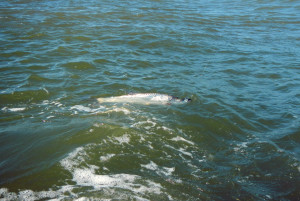 So next time you get out there, dont just cast and retrieve… Make every cast and every retrieve different until you find the cadence where the fish are dancing and then jump right on in!
So next time you get out there, dont just cast and retrieve… Make every cast and every retrieve different until you find the cadence where the fish are dancing and then jump right on in!
Keep your hooks sharp, Capt Kenjo
